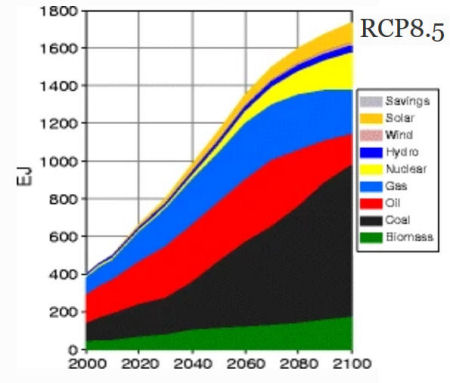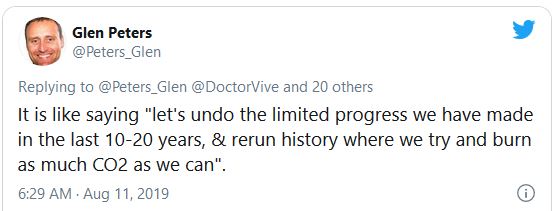Dr. Ross McKitrick published an article in The Financial Post on June 23, 2020.
He wrote:
The purpose of global climate policy is to get us from the dangerous upper end of the forecast range down to the safe bottom end we are already there.
The article is about the incorrect usage of the Representative Concentration Pathway 8.5, or RCP8.5, which is a group of emission projections of the various greenhouse gases.
"Whenever you read a media story about how we 're heading toward catastrophe if we continue operating business as usual i.e., if we don 't slash carbon emissions the reports are almost always referring to a model simulation using RCP8.5. And you can bet that nowhere in the story will they explain that RCP8.5 is an implausible worst-case scenario that was never meant to represent a likely base case outcome, or that scientists have begun castigating its usage as a prediction of a doomed business-as-usual future."
Global coal consumption was "15 [gigajoules per capita] by 2000, then rising to about 23 earlier this decade with the sudden industrialization of China and India. Groups like the International Energy Agency expect it will gradually return to the 15-20 gigajoule per capita range by 2040."
"The RCP8.5 scenario offers a different outcome. Instead of a return to normal, it projects coal use will rise to about 30 gigajoules by 2040, 45 gigajoules by 2060 and 70 gigajoules by 2100. No one seriously believes this is even possible, including people who use RCP8.5 in their climate simulations."
Read the rest of the article.
Every metric that affects carbon dioxide emissions turns to extreme worst case, implausive projection, making the CO2 and other greenhouse gas projections borderline impossible. RCP8.5 projects the global population to increase to 12.3 billion by 2100 while the UN projects 11.2 billion. Energy efficiency improvments declines from the historical rate of 1% per year to 0.5% per year, assuming slow technological change.
Total global energy consumption was 584 EJ in 2019 according to the BP Statistical Review of World Energy. Coal consumption was 158 EJ, or 27% of 2019 global energy consumption. The graph below shows coal consumption by region fron 1994 to 2019. There has been no increase in global coal consumption since 2011. The decrease in coal consumption in North America and Europe has offset the increase in the Asia-Pacific region.

The coal consumption projected in RCP8.5 is shown below. It shows a dramatic increase in coal consumption from 2019 of 160 EJ to 804 EJ by 2100. That is, coal production increases by a factor of 5.1 from 2019 to 2100. Dr Glen Peters, research director at CICERO in Norway (climate research) says "It is like saying 'let's undo the limited progress we have made in the last 10-20 years, & rerun history where we try and burn as much CO2 as we can.' "


